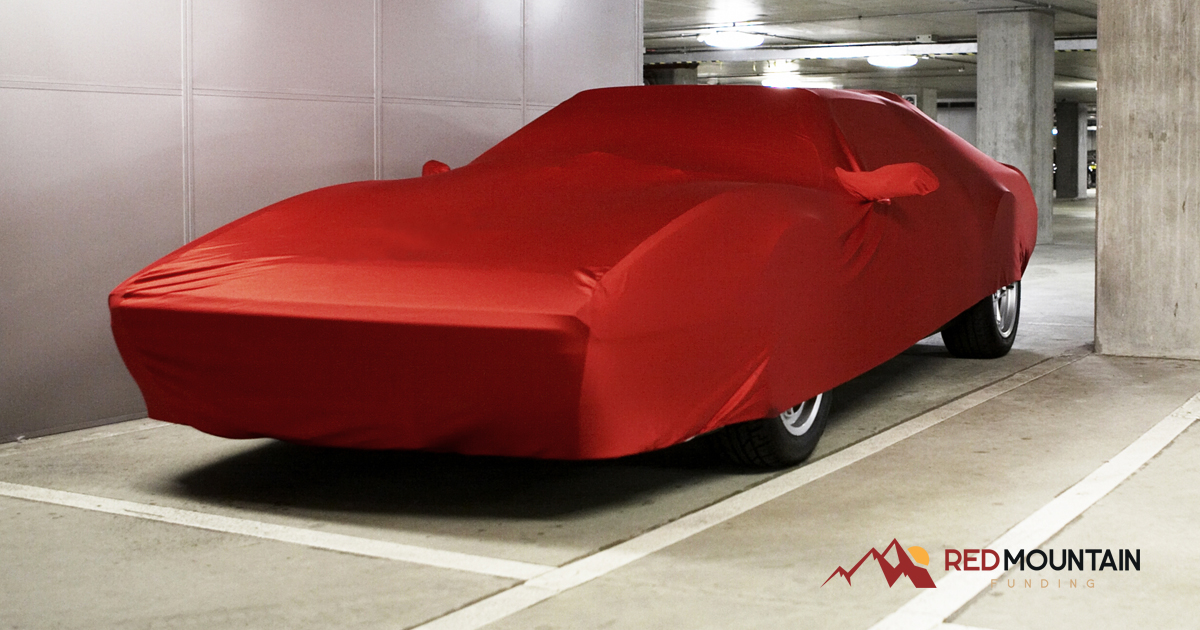Disclaimer: Some links on this page are affiliate links. We may receive a commission if you make a purchase through these links. See our full disclaimer here.
As a car lover, driving and caring for your car as often as possible is one of life’s most enjoyable pastimes. However, there are multiple reasons you might want to store a vehicle for an extended time. For example, you may want to store it due to a work commitment that will take you overseas, such as military deployment or contract. Alternatively, you may have a classic convertible that just performs better in the summer, and you want to protect it from the elements over the winter.
Whether you’re vacationing, working, or simply wish to protect a car you don’t often use from Mother Nature’s fury, you want your car to stay safe while you’re not using it. For most people, it requires finding a way to store a vehicle indoors. Utilizing a long-term storage solution is key to protecting your car while it’s not in use—leaving a car for 1 month (or longer) on the street is a recipe for body damage, dead batteries, tire issues, and more.
How Long Can a Car Sit Without Being Driven?
The length of time you can safely store your car directly corresponds to the amount of effort you put into finding a storage solution, as well as preparing your car for storage. However, experts agree that you should not let your car sit for longer than one month without at least periodically starting it and letting it run for 10 minutes or so. Unfortunately, that just isn’t always possible. In the event of a military deployment, overseas work trip, and other unforeseen circumstances, it may be much longer than that before you get to turn that key again.
If you’re anticipating storing a car for over a year—or any amount of time over a couple of months or so—it’s crucial to perform a series of steps to protect your car before it goes into storage. Otherwise, you risk increased changes to your car’s parts and chemical composition, including brittle gaskets and seals, flat stiff tires, deteriorated and leaking engine oil, thick unresponsive fuel, drained batteries, rust, and more. While preparing your car for storage won’t stop the inevitable chemical processes that take place inside your vehicle, you’ll drastically lessen their effects and have a reliable ride when it’s time to get your vehicle out of storage.

DIY Auto Storage Tips
When you’re anticipating leaving a car unused for a year, it’s essential to make preparations to prevent the aforementioned damage from occurring. To help you get your vehicle (and yourself) ready for storage, we’ve compiled a DIY tutorial for long-term car storage. Complete this checklist before parking your car:
1. Find a Long-Term Storage Solution
First and foremost, do not leave your car parked on the street. Covered or not, you simply won’t get the protection you need when your car is exposed to Mother Nature day in and day out for months and years at a time. The best outdoor car storage vendors provide a great deal more protection than a spot on the street or in your driveway.
Preferably, however, you’ll find an indoor storage solution that keeps your car out of the elements. If you don’t have a garage—or use of a friend’s garage or storage space—start by searching for “car storage near me.” Read the reviews and tour the top-recommended facilities—the interior space should be temperature-controlled, clean, dry, dark, and free of rodents to prevent damage from sunlight, rust, dust accumulation, and rodent nesting.
2. Change Your Oil
Once you’ve found the ideal storage solution, your next step is to eliminate potential materials and chemicals that can damage your engine over time. Start by changing your oil, which removes excess contaminants that build up in your oil over time. If you DIY your oil change, take a little extra time to use an engine lubricant additive to keep your engine operating at peak levels after storage.
3. Fuel Up
Similar to the way you’ve changed your oil to ensure particles and sediment aren’t sitting in your engine’s lubrication system, you’ll also want to fill up your car’s fuel tank. An empty or half-empty tank can rust, so fill your tank as full as possible and add a fuel additive to prevent corrosion. While you’ll need to drive your car a bit to ensure proper mixing of the additive and fuel, you won’t be able to drive it on this tank of fuel if you’re storing your car for more than a year or two.
4. Address Your Battery
Sitting for too long without running will drain the battery; your best-case scenario is to find a friend or family member willing to start your car every few weeks and either let it run or drive it for about 15 minutes. Barring that, you’ll need to prevent battery drain in other ways. Many people opt to simply disconnect the battery leads, while others choose to purchase a trickle charger or battery tender to maintain battery charge while away.
5. Clean Your Car’s Exterior
While a clean car is always a point of pride for any car lover, it’s especially important as you’re preparing your car for storage. Any dirt, dust, grease, or other substances can damage your car’s finish long-term, so give it a proper cleaning before you put it into storage. An additional car wax application can provide even more protection to your car’s finish.
6. Clean Your Car’s Interior
After you’ve given proper attention to your car’s exterior, it’s time to shift focus to the interior. While a temperature-controlled storage facility will keep your vehicle at the ideal temperature, you should be sure to remove any items that may swell or burst over time, as well as any items that may leave your car smelling foul. Then, vacuum, dust, and clean the interior windows to prevent accumulation over time, giving special attention to treating interior leather.
7. Keep Your Car Off the Floor
Storing a car on a concrete floor or another hard garage floor can wreak havoc on your tires. Over time, the weight of your vehicle will press down on the portion of your tires that rests on the floor, causing flat spots and potentially irreversible damage. Four-corner jack stands or tire saver ramps are a great solution to keep your vehicle’s tires from resting on the floor for long periods.
8. Don’t Set the Parking Brake
While it can seem counter-intuitive, do not set the parking brake if you’re storing your car long-term. Over an extended period, if the brake pads are in constant contact with the rotors, they can fuse. Utilizing the tire saver ramps mentioned in the previous step can prevent movement; alternatively, use chock blocks to prevent movement if you’re worried about your car staying in place.
9. Cover Your Tailpipe
The primary purpose of blocking your tailpipe is to keep rodents and other animals out of your car when it’s sitting in one spot long term. Another benefit is that this blockage can prevent moist air from entering your vehicle and causing corrosion. Find a clean rag or ball of aluminum foil and firmly press it into the tailpipe—just remember to remove it when it’s time to take your car out of storage.
10. Cover Your Car
Once your car is clean and in position, add the final layer of protection and cover your car. However, don’t use a blanket, bed sheet, or plastic tarp—these items don’t provide a tight enough fit and can allow moisture and dirt underneath to rest against your car. Instead, purchase a car cover that is soft, breathable, and tightens under your vehicle to prevent dust and moisture from entering.


During and After Storage
While your car is in storage, it’s vital to maintain your relationships with the owners of the storage location (if not your garage) as well as anyone you’ve entrusted with the task of periodically driving your car. Also, be sure to keep adequate insurance on the vehicle—usually either storage or traditional auto owner’s insurance. This will prevent additional insurance costs after storage or in the event of an incident at the storage facility.
When you’re ready to retrieve your car from storage, you’ll need to reverse many of the above procedures before you can drive your car again. Check for exterior, interior, and engine damage, as well as brakes and windshield wipers for any deterioration. If your car has been in storage for more than a couple years, drain any old fluids and replace them before driving.
Proper Long-Term Storage for Your Automobile Is Essential for Your Peace of Mind
If you do have to put your automobile in long-term storage, following our DIY list first will give you peace of mind. By following our long-term car storage checklist you’ll be decreasing the chance of a major issue- and added costs.
We think you’ll find your time spent following the tips and finding a great long-term car storage provider will be well worth it in order to prevent damage while you’re away from your automobile. You’re car is an investment, you should treat it like one!
I’m a kid at heart disguised as an auto researcher and business owner. I’ve always enjoyed providing insight in the form of reviews (anime, video games, autos, etc.) When I’m not researching, I’m spending time with my family, driving my Dodge Challenger, riding my motorcycle, and finding new entrepreneurial pursuits.










